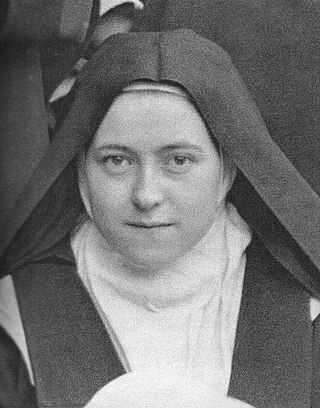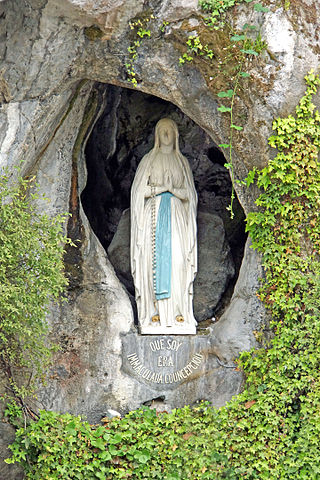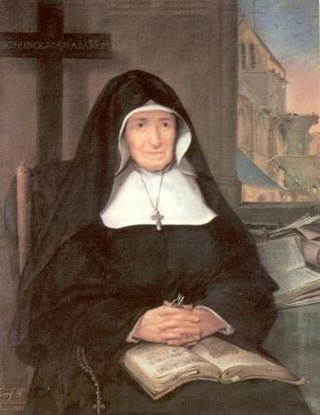Related Research Articles

Pope John XXIII was head of the Catholic Church and sovereign of the Vatican City State from 28 October 1958 until his death in June 1963.

Therese of Lisieux, in religion Therese of the Child Jesus and the Holy Face, was a French Discalced Carmelite who is widely venerated in modern times. She is popularly known in English as the Little Flower of Jesus, or simply the Little Flower, and in French as la petite Thérèse.
The history of the Catholic Church is integral to the history of Christianity as a whole. It is also, according to church historian Mark A. Noll, the "world's oldest continuously functioning international institution." This article covers a period of just under two thousand years.

Our Lady of Lourdes is a title of the Virgin Mary. She is venerated under this title by the Roman Catholic Church due to her apparitions that occurred in Lourdes, France. The first apparition of 11 February 1858, of which Bernadette Soubirous told her mother that a "Lady" spoke to her in the cave of Massabielle while she was gathering firewood with her sister and a friend. Similar apparitions of the "Lady" were reported on 18 occasions that year, until the climax revelation in which she introduced herself as: "the Immaculate Conception". On 18 January 1862, the local Bishop of Tarbes Bertrand-Sévère Laurence endorsed the veneration of the Blessed Virgin Mary in Lourdes.

Crispino da Viterbo - born Pietro Fioretti - was an Italian Roman Catholic professed religious from Order of Friars Minor Capuchin. Fioretti was an ardent devotee of the Mother of God and was consecrated to her protection in 1674 and he even made a small altar dedicated to her when he served in the kitchens at the house in Orvieto. He served in various roles for the order in various cities around Rome where he became a well-known figure with various nobles and prelates - even Pope Clement XI visiting him and seeking him out for advice and support. Fioretti likewise was known as a sort of wonderworker who worked miracles during his lifetime. He was also known for his warm sense of humor and his simple method for living.

The Collegium Russicum is a Catholic college in Rome, originally founded by Pope Pius XI and dedicated to training priests for the newly organized Russian Greek Catholic Church.

The Basilica of Sainte-Thérèse of Lisieux is a Catholic church and minor basilica dedicated to Saint Thérèse of Lisieux. Located in Lisieux, France, the large basilica can accommodate 4,000 people and, with more than two million visitors a year, is the second largest pilgrimage site in France, after Lourdes. Pope John Paul II visited the Basilica on 2 June 1980.

St.Theresa Church is a Catholic church under the jurisdiction of the Archdiocese of Madras-Mylapore (Chennai-Mylai) in Tamil Nadu, India, in Sembiam division of Perambur, Chennai. Approximately 900 families have the membership in this Catholic parish. Many people from various parts of Chennai make pilgrimage to this church for the devotion of Infant Jesus.

Marie-Madeleine Postel, born Julie Françoise-Catherine Postel, was a French Catholic professed religious and the founder of the Sisters of Christian Schools. Postel was also a member from the Third Order of Saint Francis and had served as a schoolteacher after the French Revolution where she oversaw the education of around 300 children. The Revolution saw her use her then-disbanded school to house fugitive priests despite the great risk that posed to her own life.
References
- ↑ "Canonization – Homily of Pope Pius XI at the Canonization of St. Thérèse on 17 May 1925". Eternal Word Television Network. Retrieved 2021-04-04. Source: Taylor, Thomas N. (1930). Saint Thérèse of Lisieux, The Little Flower of Jesus. New York: P.J. Kennedy & Sons. pp. 271–274.